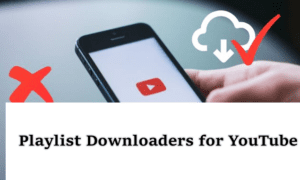Recent brain research has revealed that teens exhibiting signs of internet addiction show changes in the orbitofrontal cortex, a decision-making center, in ways similar to substance disorders.
It’s no secret adolescents today live with devices glued to their palms. Practicing healthy digital habits can be a real challenge for adolescents wired into endless entertainment and information.
We all remember those restless, boredom-can’t-bear-it feelings. For teens today, phones and tablets promise instant relief from boredom’s sting.
What is addiction?
Addiction happens when we develop an intense urge to repeatedly do or use something, even if we know it may harm us. It can impact our health, finances, relationships and more. Many people struggle with addiction to substances like alcohol or drugs. But addiction can also develop from behaviors like gambling, technology use, shopping, and work.
Addiction feeds on the brain’s natural reward circuits. We start craving more and more of that chemical boost, seeking it out repeatedly, even when the downsides pile up.
Over time, this creates dependence, reducing our ability to function without engaging in addictive behavior. “Eventually, it can take over, hijacking brain areas related to judgment, decision-making, and self-control,” says Carlos Escobar, a Licensed Mental Health Counselor at Real Recovery.
What are the most common addictions among adolescents?
In their rapid growth during the teen years, young people explore and experiment as they shape their adult identities. Today’s hyper-connected adolescents have countless possibilities at their fingertips with gaming worlds, social spheres, endless shopping, and entertainment. The most commonly reported tech-connected patterns crossing into addictive terrain among teens are:
Internet addiction: Teens get hooked on scrolling and clicking for hours, disrupting sleep and responsibilities. The nonstop stimulation is hard to resist.
Gaming addiction: Getting wholly absorbed in video games causes teens to withdraw from real-world relationships and activities. Social and emotional health suffers.
Nicotine addiction: The explosion of flavored nicotine vapes has spawned alarming addiction levels, even in middle schoolers. Early dependence carries risks.
Social media addiction: Compulsively chasing “likes” and comments, teens lose perspective, curating online facades instead of nurturing real-world bonds.
What impact can addiction have?
Emerging research reveals that excessive technology use can profoundly impact a teenager’s still-developing brain. While tech offers many positives, unhealthy relationships with devices correlate with observable neurological changes.
Addiction takes a heavy toll at home, work, finances, and beyond. Individuals may resort to illegal acts to fund their habit, facing fines, jail time, and lifelong criminal records. This may affect several aspects of your everyday life, such as career options, credit scores, and car insurance rates.
The costs of addiction also drain bank accounts, leading to insurmountable debt, bankruptcy, and financial ruin. Substance abuse erodes the foundations of stability and security in all aspects of life.
Addiction strains family relationships and destroys trust due to unreliability, arguments, and sometimes domestic violence. People suffering from addiction may lose friendships because friends get tired of the drama and broken promises or feel embarrassed by their behavior.
Addiction causes people to lose interest in hobbies and activities they used to enjoy. Their world begins to revolve around obtaining and using substances instead of positive life experiences. This also applies to schools and jobs, as performance can suffer greatly. People may get expelled, fired, or quit due to addiction issues.
The physical health impacts are also severe. “People can experience overdoses, seizures, shakes, vomiting, injuries from drunk accidents, and other medical crises. If addiction persists for years, it can cause severe long-term damage to vital organs,” notes Lindsey Tong, a Licensed Clinical Social Worker at Profound Treatment.
Emotionally, addiction isolates people, leaves them feeling depressed and hopeless, and increases thoughts of suicide in many cases. It stops people from coping with life’s ordinary stresses. Getting through each day becomes an immense challenge.
In terms of spiritual health, addiction cuts people off from feeling connected to anything meaningful. Their sense of inner peace and life purpose fades away, leaving an empty void many try to fill with more substances. But that never works.
How can technology facilitate addiction?
Technology offers adolescents endless possibilities for connection, creativity, and growth. Yet its convenience and constancy also enable obsessive behaviors. Several factors can pull vulnerable teens down addictive rabbit holes:
1. Easy access
For digital natives, the online world is always at the palm of their hand. With smartphones, the web’s infinite novelty is a click away, anywhere, anytime. Unfettered access can foster compulsive consumption without regard for consequences.
2. Constant advertising
Youth see thousands of ads daily, many algorithmically targeted to their personalized interests. Deceptively exciting promotions encourage impulsive clicks, often leading to more clicks in an endless cycle.
3. Provides anonymity
Online anonymity emboldens risk-taking in adolescents still developing judgment skills. Unfamiliar with potential outcomes, youth explore explicit content, substances, and gambling – falling into harmful patterns before seeing the bad sides of it.
Summing up
Adolescents are still developing and learning. In today’s world, where everyone has the internet and smartphones, finding a healthy balance with technology can be challenging for teens. However, we can make a difference with care and support from adults.
Teens face difficult choices online and must be guided to use technology wisely. By having open and proper conversations with teens, we can raise their awareness about unhealthy tech habits. Using research-based guidance, families can empower teens to adopt healthy digital lifestyles.



































